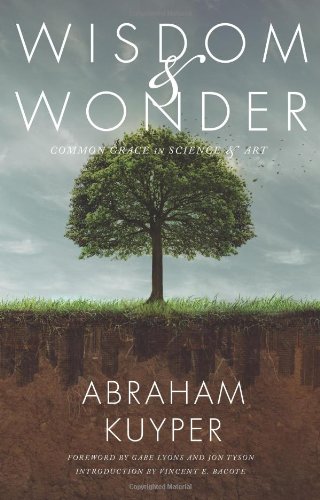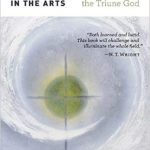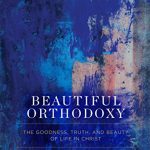
How can Christians live joined up lives in a fallen world? More, how does the doctrine of common grace inform our posture toward culture in general and those outside the faith in particular? Can anything good, true, or beautiful come from fallen humans? According to the Dutch theologian and statesman Abraham Kuyper (1837-1920), the doctrine of common grace encourages us to see God’s preserving grace in all things and participate in the full panoply of the created order. In Wisdom & Wonder, readers are treated to two sections from Kuyper’s larger three-volume work on common grace. The two sections, newly translated, cover his discussion of common grace in science and art, respectively.
In chapter one, Kuyper grounds the human ability for thinking in the created order. God is fundamentally a thinking being. God first deliberates. Then, in the decree, he creates.
Science—understood to encompass both what we today call science as well as the humanities—is grounded in the creational order and thus independent in character, distinct
from the state or the church. Science would have proceeded even if the fall never happened. The human ability to theorize about the world is part of the imago Dei. Since God’s thinking is primary (and prior to creation), then divine thinking must be embedded in all created things. “Thus there can be nothing in the universe that fails to express, to incarnate, the revelation of the thought of God. . . . The whole creation is nothing but the visible curtain behind which radiates the exulted workings of this divine thinking” (p. 39). Individual humans, however, cannot discover alone the totality of all that God has made. The pursuit and discovery of knowledge—science—is communal and historical, unfolding over time, guided by the invisible hand of God, the “Architect and Artisan” (p. 46).
In chapter two, Kuyper explores how sin has affected man’s pursuit of knowledge. The chief effect of sin’s darkening of the human mind lies in the fact “that we lost the gift of grasping the true context, the proper coherence, the systematic integration of all things” (p. 55). In other words, we no longer can see the fittingness of the world nor the divine drama that is playing out throughout the universe, a universe that Calvin famously described as a theatre of God’s glory. Like a dog seeing the stone, wood, and mortar of a castle without apprehending its unity or style, we too correctly see discrete parts of the world (the atom, the cell, the oak tree, the star, the galaxies, etc.) but fail to “perceive in creation the coherence of God’s thought” (p. 56). How might the pursuit of knowledge proceed without the fall? Kuyper considers this question by observing that Adam immediately and accurately perceived the nature of animals and was given the task of naming them in Genesis 2 (p. 57). By extension, pre-fall man immediately and accurately perceived plants and inanimate nature too. Post-fall humans can no longer immediately and accurately perceive the essence of things or name them. Science and learning now proceed through “arduous industry, precise observation, careful analysis, and conscientious synthesis” (p. 59).
The good news is that through common grace, humans still can know the truth about the world. Common grace bestows on all the ability to attain practical wisdom and in a more limited and laborious manner, knowledge (i.e., true beliefs through the deliverances of science and the humanities). The moderns exalted objectivity and the primacy of observation. In the pursuit of truth, it is thought, man is a generic human being making dispassionate empirical observations. All science, including the spiritual sciences, we are told in chapter three, is to proceed in this way. But, argues Kuyper, a danger lurks: “This has led to the increasing materializing of all science, feeding the false notion that the spiritual life arose from material causes” (p. 67). Kuyper opposes this way of thinking. We must not excise the person, the spiritual, from our pursuit of knowledge. Foreshadowing Alvin Plantinga’s argument for other minds and C. S. Lewis’s argument from reason, Kuyper argues that we can know through introspection that we are minds (and not just bodies) and that there are other minds. “Thinking itself is a spiritual activity” (p. 68) and thus science cannot proceed on empirical/external observation alone. The ability to observe the material cosmos presupposes a world, a mind, and a connection between mind and world. Empirical science, “to the extent that [it] clings to the visible and observable . . .cannot even entertain the question of the origin, coherence, and destiny of things” (p. 71). So, again, common grace allows fallen man to see something of the natural world, even as we lack perfect clarity. Still, we must beware sinning against common grace too, by denying the spiritual/mental/personal side of things or in suppressing further the innate idea of God (p. 74). In chapters four and five, Kuyper argues for the validity and necessity of Christian scholarship. Christians pursue knowledge from a distinct cognitive vantage point as regenerate, spiritual beings. Guided by the Holy Spirit and the Holy Scriptures, the faithful offer a vision of the world that is antithetical to the dominant materialistic way of seeing. Christians ought to pursue knowledge since “God’s honor requires the human spirit to probe the entire complexity of what has been created, in order to discover God’s majesty and wisdom” (p. 93). Kuyper rightly notes the importance of the university in shaping culture: “the general mentality among the populace receives its imprint from the academics” (p. 94). Thus, Christians cannot relegate the life of the mind to nonbelievers: “If that university life and the influence it produces on the populace remain exclusively in the hands of unbelievers, then public opinion will ultimately be turned entirely in that direction, also morally and religiously, and will have a most injurious effect in our Christian circles as well” (p. 95). Kuyper is surely correct. Today, the academy is largely secular; Christianity is often viewed as unwelcomed or implausible. What can be done? According to Kuyper, there is only one thing to prevent the marginalization of Christianity within the spheres of learning: “Christian thinkers [ought] to establish a university-level movement, and by means of that academic movement manifest a different mode of perceiving and thinking” (p. 95) Again, Kuyper is surely correct. If Christianity has any hope of being considered plausible it must be viewed as a viable option in the marketplace of ideas. Thankfully, Christian scholars are making a difference in the secular academy. The idea of Christian scholarship is not totally outrageous. The cadre of elite Christian scholars in the secular academy is a small but growing band, led and inspired by the likes of Marsden, Noll, Plantinga, and Wolterstorff, all, interestingly, whom hail from a broadly Dutch Reformed tradition. Moreover, Christian scholarship is flourishing in the parallel Christian institutions of higher learning. Still, much remains to be done, especially given the pervasive disenchantment in culture.
Kuyper’s words are as relevant today as they were one hundred years ago: “a better future and a stronger position can be obtained by believing Christianity only when Christianity is permeated by its calling to bring the power of its faith to independent expression also in the arena of science [i.e., knowledge]” (p. 103). We must not abandon the halls of learning if Christianity is to have a future. Beginning in chapter six, Kuyper turns his attention to art and beauty. Art initially found expression in the service of public worship (in pagan and Hebrew temples) but quickly, due to the fall, led to idolatry, first of nature, then humans and animals. Idol worship of images
obscures arts true nature—as a servant to theology and an aid to worship. This explains, according to Kuyper, the Reformation’s reaction against art and the subsequent emphasis of worshiping God in spirit and truth (without the aid of images). But, asks Kuyper, does this mean art plays no role in religious or secular life? The answer, according to Kuyper, is complex. First, art belongs to common grace, not particular grace. It is a gift for all people. “So, then, especially in the sixteenth century, art moved out of the tent of the sacred to erect its own tent in the domain of common grace, where it belongs” (p. 120). Second, and yet, as Kuyper argues in chapter seven, art and beauty are from God and point to God: “beauty was designed by God to be something powerful, having arisen from the pleasure of God, having been intentionally willed by God and having been called into existence by his almighty power” (p. 127). Beauty, as well as the innate sense of beauty found in man, are still present in a fallen world because of common grace. In the world to come, the kingdom of glory, the original beauty of creation will be restored and even amplified: “Glory is, in fact, nothing other than a higher degree of beauty”
(p. 130). For now, between the original beauty of paradise and the exalted beauty of the kingdom of glory, man lives “in that ‘in between’ stage” where we discover alongside each other the beautiful, the ordinary, and the ugly” (p. 133). Third, even if there was no fall, art would still exist. Man creates in the derivative mode because we image a creating God: “We can fashion and process things that exist, but only God creates” (p. 150). Importantly, as Kuyper discusses in chapter eight, art and beauty belong to the domain of the imagination. “No human artist can create substance and splendor in reality; only God can do that. . . . with people [art] always remains a creating in a creaturely manner, creating out of the imagination, creating for appearance to the eye, creating the representation of the thing rather than the thing itself” (p.151). Still, art doesn’t merely represent—it functions prophetically too, stirring the heart and reminding us of home. “All art and beauty . . . constitute a prophecy and foreshadowing of that coming glory. . . . art exists in direct connection with our expectations about eternity. With trembling hands, as it were, art reaches out toward the glory that through Christ will one day fill
heaven and earth” (p. 144). Thus, art functions as a kind of “bridge between life here and life on the other side of the grave” (p. 145). Art’s noble calling, explored in chapter nine, is to “ennoble nature and along with it, human existence on earth” (p. 156). The artist then functions as a kind of priest by helping us to see and delight in the world—in all its grandeur and beauty—as a gift. In particular, Kuyper thinks that three arts—architecture, music, and song—are particularly useful in impelling us to worship, speaking to our hearts and transporting us to the divine through the beauty and harmony of space, rhythm, and song. We see then, in art, two possibilities: art infused with the spirit from below and a longing for autonomy leads to perversion, sin, and idolatry; art infused with the spirit from above lead to unity, worship, and a taste of the kingdom of glory and a time
when beauty—like all of creation—will be perfected. Granted, as Kuyper skillfully argues in chapter 10, until the end, art will be a “mixture of the profane and the sacred” (p. 180). Importantly, while there will always be the temptation toward idolatry, Christians should not neglect art, beauty, and the imagination—they are part of God’s common grace to all and a reminder of home.




